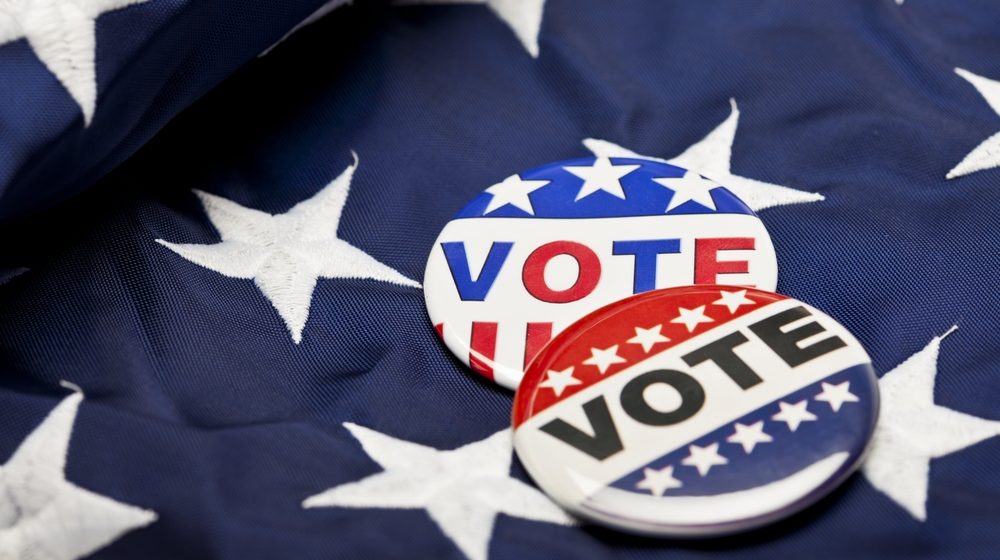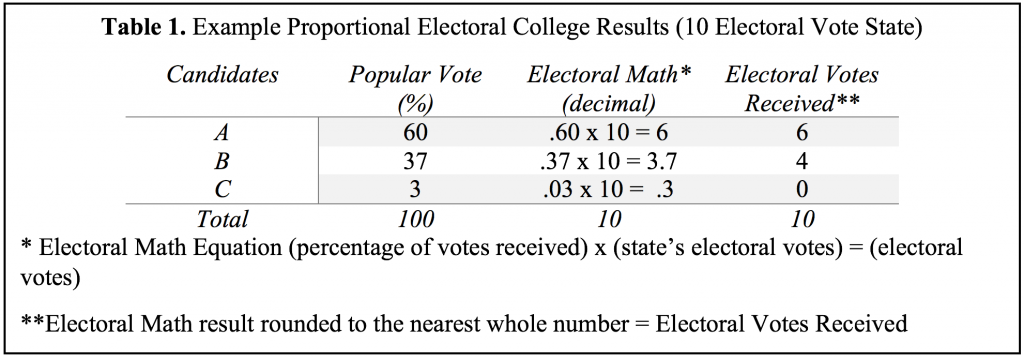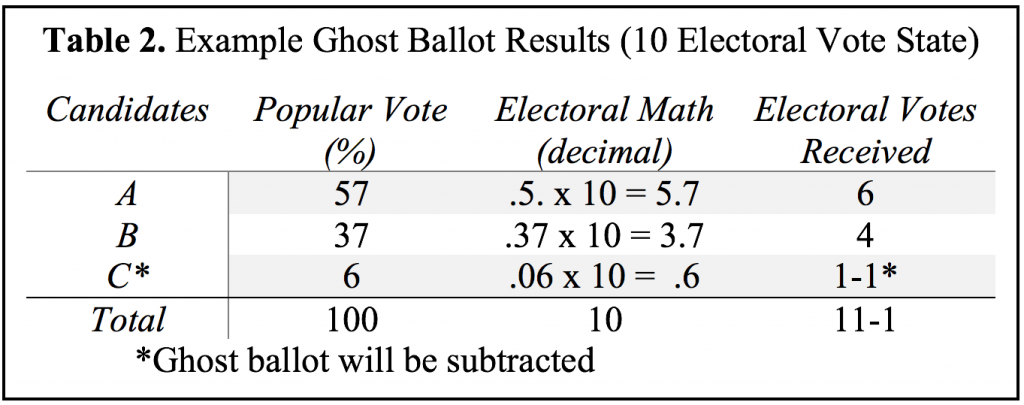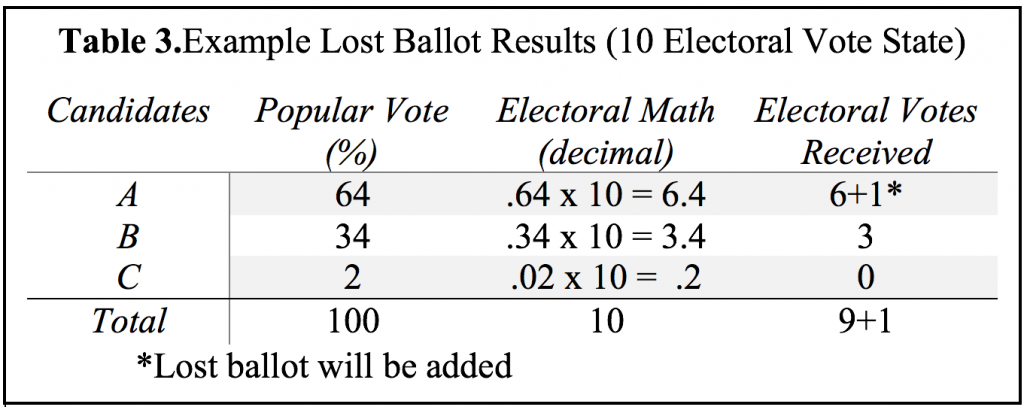Recent weeks witnessed renewed debate about the viability of the United States Electoral College, but few offered viable alternatives to the current system. While much of the vexation has arisen in part due to partisan frustrations, there are many reasons to both criticize and praise the current system without succumbing to arguments rooted in political dogma. While I am not a politician, or policy expert, I am a concerned citizen who cares deeply about this country and the voice of the American people, which is why I propose we explore the possibility of a proportional Electoral College, which I will argue will boost turnout and citizen representation.
The Electoral College Today
The Electoral College was written into the American Constitution to solve the complexities in electing a presidential and vice-presidential candidate. Its process sought to balance the political factions of its day, while ensuring a balance between the national and state government. The Framers of the Constitution were concerned about giving a voice to smaller states, thereby preventing dominance by the populous states. Furthermore, each committee of state electors, usually drawn from among the elite land-holding class, would theoretically serve as a final check against an unfit presidential candidate.
As the system stands, electoral votes are distributed in a “winner-takes-all” system to the candidate who receives the largest share of the state’s popular vote. Recent stark examples of the absurdity in a “winner-takes-all” system occurred in Florida and New Mexico during the 2000 presidential election when candidate George W. Bush won both states by a fraction of a percentage point, but gained the total number of each state’s electoral votes.
The current Electoral College has thus evolved to bestow power to swing states. It also creates the unfortunate situation that a candidate can win the popular vote but still lose the election because of the way electoral votes are distributed. Historically, this has occurred in five elections with two of the five instances having occurred in the last sixteen years.
Towards a Proportional Electoral College
In a Proportional Electoral College, election procedures would maintain the currently allotted electoral votes and the requirement for 270 to win, however the process of casting votes, distributing votes to candidates, and tackling contingencies, such as tie breaking, would take a new form.
Under the Proportional Electoral College system I am proposing, an automated computer system would replace individual electors in reporting and casting votes on behalf of the electorate. A computerized system that casts ballots automatically will expedite the election process, as the current system does not officially elect a president until over a month after the election.
Subsequently, votes would be distributed to candidates on a proportional basis: candidates would receive a fraction of the electoral votes of each state, equivalent to the percentage of the popular vote they garnered during the election. It is key to note that not all candidates who run for office will receive electoral votes, as they will need to meet a popular vote threshold specific to each state. This concept will be explained in greater detail in the following.
For example, three Candidates A, B and C receive 60, 37, and 3 per cent of the popular vote in State X. Because State X has 10 electoral votes, the candidate would receive 6, 4 and 0 electoral votes, respectively (see Table 1). If the same candidates ran in State Y, with a total of 20 electoral votes, the vote distribution would be 12, 7, and 1, respectively as the threshold would be reduced to 2.5 per cent.
Proportional distribution of electoral votes maintains the foundation of the Constitutional Framers’ original intent, while providing a positive alternative to the current system. In keeping with the Framer’s vision, this system still elevates the voice and status of smaller states by maintaining the same distribution of Electoral votes for each state, while also giving a voice to political minorities in each state by distributing electoral votes to the candidates who lost the popular vote in each state. Reform in the Electoral College system will result in a fundamental change in campaign tactics. Candidates will have to turn their attention away from battle ground states and begin campaigning and listening to voices across the country.
Ideally, these shifts would improve voter turnout and involvement in the democratic process. (The US ranks 31st in terms of voter turnout among OECD countries.) Multiple studies show that proportional electoral system elections increase voter turnout (see ).
In a Proportional Electoral College there are two mathematical anomalies that will occur, referred to as “ghost ballots” and “lost ballots”. A ghost ballot occurs when three or more candidates receive a percentage of the vote in a manner that causes the electoral votes to round up and exceed the allotted state votes. This is exemplified in Table 2 where a distribution of 57, 37 and 6 per cent in a state with 10 electoral votes translates into 6, 4 and 1 votes respectively. This is overcome by removing the surplus electoral vote from the candidate receiving the lowest portion of the popular vote. In the event of a lost ballot the voting anomaly is reversed, and a ballot is absent due to the percentages rounding down, as shown in Table 3. The solution is tantamount to a ghost ballot, as the lost ballot would be awarded to the candidate receiving the largest percentage of the state’s popular vote.
Unlike the current system, where in the case of a tie the House elects the President and the Senate the Vice-President, a proportional system would create an automated run-off. The lowest electoral vote winner would be eliminated, and their votes redistributed on a state basis to the remaining popular winner until one candidate receives 270 electoral votes.
The Feasibility of Reform
While the current Electoral System has prevailed since the nation’s founding, both Republican and Democratic leaders have been quoted advocating for a change in the system. President-elect Donald Trump wrote on Twitter in 2012 that “the Electoral College is a disaster for democracy.” Democratic Representative Gene Green from Texas expressed that “every citizen’s vote should count in America, not just the vote of partisan insiders in the electoral college.”
Beyond simple rhetoric, a change to the system would be advantageous for both parties given the future landscape of the United States’ demographics.
Beginning with Republicans, while securing this year’s Presidential election, many in the top leadership of the Republican Party have seen the “writing on the wall”. Their party lost the popular vote by nearly three million votes, and are doing increasingly poorly with minorities. To make matters worse, the Hispanic demographic—a group the Republicans lost by worse than a three to one odds—is expected to be the majority of the United States by 2060. And, minority growth has been more rapid in many swing states the Republicans rely on to win national elections such as Florida, Arizona, Virginia and Colorado.
Democrats are not overly optimistic about future elections either, as they have failed to break ground into the Midwestern, and Southern states also coined as the Republican “Red Wall.” Democratic Leadership expressed this concern in an interview, stating that if Democrats are unable to gain influence in these states, ‘we’re never going to be back in the majority.’ In fact, Democrats have only controlled both chambers twice in the last twenty years (103rd and 110th Congresses) and historical data show that there are thirteen states that Democrats have not won in the last seven elections,, and five they have only won once, totaling almost 160 electoral votes. This is in part due to Democrats having failed to inspire voters on the local level, partially due to an overall culture of apathy among poor voters, which has only been exacerbated further in “winner-take-all” Republican-dominated states.
However, a Proportional Electoral College may assuage both parties’ woes. It will allow Republicans to hold on to swing states that are waning out of their reach, and further expand their reach into enclaves from which they were traditionally excluded, like New York and California. Similarly, Democrats will still be able to retain their influence among the affluent, educated and minority portions of society while expanding their reach into metropolitan areas of the Republican-controlled central and southern United States.
A Proportional Electoral College provides benefits to individuals from all political parties and views. It gives their voices strength and reason regardless of region. Nonetheless, even as speakers from both parties have expressed concerns looking forward, we will not see any change soon. With polarization and intransigence rife on the Hill, we are unlikely to see a progressive cross-partisan coalition of Republicans and Democrats emerge that could implement much-needed reform of the US electoral system.









